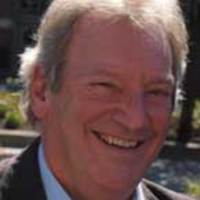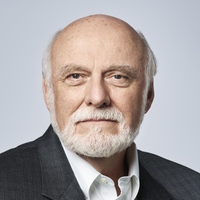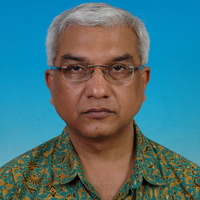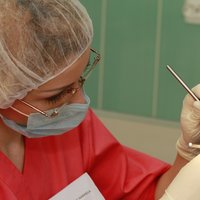
Colin Robinson
Colin Robinson is Emeritus Professor of the Dental Institute at Leeds.
Professor Colin Robinson attended the University of Leeds receiving an honours degree in Biochemistry in 1965. A PhD in biochemistry was obtained in 1968 under the supervision of Professor John Weatherell in the Biological Research Unit of the School of Dentistry. This comprised micro analytical studies of skeletal tissues. After an MRC post doctoral position he joined the faculty of the Dental School in the then newly constituted Department of Oral Biology. A senior lectureship followed in 1982. In 1985 Professor Robinson was awarded a readership and he also became head of the department of Oral Biology until 2000. In 1988 he was appointed Dean for pre-Clinical studies to provide an academic link between preclinical departmental teaching and the Dental School. In 1990 he was awarded a personal chair/full professorship. The inception of the Dental Institute at Leeds 1992 was accompanied by his appointment as Research Director until 2004. During this time he was responsible for a complete reorganisation of research in the Institute. He is author/co-author of more than 300 publications in scientific journals.
He has served on numerous national and international bodies including Secretary General and President of ORCA (European Organisation for Caries Research), President of the British Society for Dental Research as well as a number of national and international grant awarding bodies.
He received the ORCA Rolex award for distinguished research in 1982 and the International Association for Dental Research Distinguished Scientist award in Biomineralisation in 1992. In 1998 he was elected a Founder Fellow of the Academy of Medical Sciences UK for his contributions to Medical Sciences.
Professor Robinson's long-standing research interests lie in the biochemistry of mineralised tissues, morphogenesis, morphostasis and pathology, comprising the initiation and growth of mineral phases, interaction with extracellular matrices and their chemical and physical characterisation. This includes the effects of fluoride and other extraneous components. More recently, attention has been focused on novel physical technologies (AFM, CFM, SNOM). Work also includes oral soft connective tissues, salivary rheology and the interaction of oral biofilms with both natural and artificial substrates. Professor Robinson is a Founder Fellow of the Academy of Medical Sciences. He has considerable international involvement in oral and dental research: Secretary General and past president of the European Organisation for Caries Research (ORCA), past president of the British Division of the International Association for Dental Research (IADR), and former Chairman now honorary life member of the Mineralised Tissue Group of the IADR. He is also a corresponding honorary member of the Finnish Dental Society. Professor Robinson received the ORCA Rolex prize in 1982 for outstanding work on the basic biology of dental enamel and in 1992 received the IADR Distinguished Scientist Award for outstanding research in mineralised tissues. He served on the steering group for the Pan European Federation of Societies for Dental Research, UK Forum for Dental Research and is a member of The Advisory Board to the Research Councils (MRC). Professor Robinson is an affiliate senior member of staff at the Forsyth Dental Centre Boston, US. He was also Chairman of the Association of Basic Science Teachers in Dentistry of which he is now an honorary life member.
SCIENTIFIC INTERESTS -:
BIOMINERALISATION –
Hydroxyapatite Crystal Formation- Fusion of preformed subunits stabilizing amorphous nuclei
Freeze etching work (Robinson et al 1981) suggested that developing enamel substructure comprises spherical subunits with a diameter similar to the width of enamel crystals. From this it was concluded that these may reflect original nucleating centres containing amorphous or short range order calcium phosphates stabilized by matrix protein components. Degradative processing of the matrix by endogenous metalloproteases (MMP20) and a phosphatase could facilitate mineral precipitation. Fusion of such units would lead to the long crystals characteristic of enamel.
AFM data supported this view in that morphology of early crystals comprised a linear succession of roughly spherical swellings. These disappeared as crystals grew in thickness but were replaced regular bands of positive charge similar in width to the original spheres.
Smooth hypoplastic amelogenesis imperfecta revealed short fragments of crystals suggesting the defect resulted in non fusion of these early units.
The spherical units themselves contained smaller chemically defined domains each sphere or charged band comprising a hexagonal cluster of smaller spheres. These appeared to be protein binding sites possibly for modulating proteins but may also represent initial nucleation sites.
Selected relevant references
Address: The Dental Institute
University of Leeds
Clarendon Way
Leeds LS2 9LU
UK
Professor Colin Robinson attended the University of Leeds receiving an honours degree in Biochemistry in 1965. A PhD in biochemistry was obtained in 1968 under the supervision of Professor John Weatherell in the Biological Research Unit of the School of Dentistry. This comprised micro analytical studies of skeletal tissues. After an MRC post doctoral position he joined the faculty of the Dental School in the then newly constituted Department of Oral Biology. A senior lectureship followed in 1982. In 1985 Professor Robinson was awarded a readership and he also became head of the department of Oral Biology until 2000. In 1988 he was appointed Dean for pre-Clinical studies to provide an academic link between preclinical departmental teaching and the Dental School. In 1990 he was awarded a personal chair/full professorship. The inception of the Dental Institute at Leeds 1992 was accompanied by his appointment as Research Director until 2004. During this time he was responsible for a complete reorganisation of research in the Institute. He is author/co-author of more than 300 publications in scientific journals.
He has served on numerous national and international bodies including Secretary General and President of ORCA (European Organisation for Caries Research), President of the British Society for Dental Research as well as a number of national and international grant awarding bodies.
He received the ORCA Rolex award for distinguished research in 1982 and the International Association for Dental Research Distinguished Scientist award in Biomineralisation in 1992. In 1998 he was elected a Founder Fellow of the Academy of Medical Sciences UK for his contributions to Medical Sciences.
Professor Robinson's long-standing research interests lie in the biochemistry of mineralised tissues, morphogenesis, morphostasis and pathology, comprising the initiation and growth of mineral phases, interaction with extracellular matrices and their chemical and physical characterisation. This includes the effects of fluoride and other extraneous components. More recently, attention has been focused on novel physical technologies (AFM, CFM, SNOM). Work also includes oral soft connective tissues, salivary rheology and the interaction of oral biofilms with both natural and artificial substrates. Professor Robinson is a Founder Fellow of the Academy of Medical Sciences. He has considerable international involvement in oral and dental research: Secretary General and past president of the European Organisation for Caries Research (ORCA), past president of the British Division of the International Association for Dental Research (IADR), and former Chairman now honorary life member of the Mineralised Tissue Group of the IADR. He is also a corresponding honorary member of the Finnish Dental Society. Professor Robinson received the ORCA Rolex prize in 1982 for outstanding work on the basic biology of dental enamel and in 1992 received the IADR Distinguished Scientist Award for outstanding research in mineralised tissues. He served on the steering group for the Pan European Federation of Societies for Dental Research, UK Forum for Dental Research and is a member of The Advisory Board to the Research Councils (MRC). Professor Robinson is an affiliate senior member of staff at the Forsyth Dental Centre Boston, US. He was also Chairman of the Association of Basic Science Teachers in Dentistry of which he is now an honorary life member.
SCIENTIFIC INTERESTS -:
BIOMINERALISATION –
Hydroxyapatite Crystal Formation- Fusion of preformed subunits stabilizing amorphous nuclei
Freeze etching work (Robinson et al 1981) suggested that developing enamel substructure comprises spherical subunits with a diameter similar to the width of enamel crystals. From this it was concluded that these may reflect original nucleating centres containing amorphous or short range order calcium phosphates stabilized by matrix protein components. Degradative processing of the matrix by endogenous metalloproteases (MMP20) and a phosphatase could facilitate mineral precipitation. Fusion of such units would lead to the long crystals characteristic of enamel.
AFM data supported this view in that morphology of early crystals comprised a linear succession of roughly spherical swellings. These disappeared as crystals grew in thickness but were replaced regular bands of positive charge similar in width to the original spheres.
Smooth hypoplastic amelogenesis imperfecta revealed short fragments of crystals suggesting the defect resulted in non fusion of these early units.
The spherical units themselves contained smaller chemically defined domains each sphere or charged band comprising a hexagonal cluster of smaller spheres. These appeared to be protein binding sites possibly for modulating proteins but may also represent initial nucleation sites.
Selected relevant references
Address: The Dental Institute
University of Leeds
Clarendon Way
Leeds LS2 9LU
UK
less
Related Authors
Kastriot Meqa
University of Prishtina
Rodrigo A. Giacaman
Universidad De Talca
James Gutmann
Texas A&M University
Ana Gabriela Benghiac
University of Medicine and Pharmacy "Gr. T. Popa", Iasi
InterestsView All (31)






Uploads
Teaching Documents by Colin Robinson
Mature enamel by Colin Robinson
Enamel Development by Colin Robinson
AFM studies have revealed 30-40 nm wide regular positively charged bands across maturation stage rat enamel crystals. Low pH resolved these into positively charged spherical domains ~30 nm diameter. Crystal surface pK's, from adhesion force titrations were about 6.5. The effect of fluoride on this pK and on the nanostructure of fluorosed human enamel crystals has not been reported. Nanostructure and surface chemistry (pK) of normal and fluorotic human and fluoride treated rat maturing enamel crystals was examined. Enamel was sectioned, and polished prior to examination using Atomic Force Microscopy (AFM) in height and friction modes. High resolution height images revealed 30nm diameter spherical domains within crystals arranged as layers of hexagons or as a shallow spiral. Fluorotic enamel showed similar but less well ordered nano-domains. These could represent arrangement of original initiation sites or binding sites for modulating matrix proteins. Surface pK was derived from adhesion force measurements between functionalized tips (OH or COOH) and crystal surfaces between pH 2 and pH 10. pK values, about 6.5 for normal crystals were reduced to approximately 5.5 after fluoride treatment. Reduction in surface pK by fluoride might indicate lowered protonation with possible effects on matrix protein binding.
Key words:
apatite, crystal, nanostructure, surface-chemistry, AFM
Key words;
Human, Plaque, Biofilms, Architecture, Confocal- microscopy
Caries occurs at inaccessible stagnation sites of the dentition where the mechanical removal of plaque biofilms is difficult. At these sites, the penetration through plaque of topically-applied protective components, such as fluoride and antimicrobials, is likely to be crucial in caries inhibition. Several factors may have a critical influence upon the efficacy of such agents. These include the thickness and architecture of the plaque biomass, and the distribution and viability of cariogenic plaque bacteria.
In this study, plaque biofilms were generated in vivo on a natural human enamel substratum and recovered intact from the oral cavity after 7 days. Recovered biofilms were subsequently analysed throughout their depth, using a combination of confocal microscopy, checkerboard DNA analysis and histological techniques to provide detailed information relating to the distribution of biomass and plaque bacteria. The recovered biofilms were 400-900m thick, comparable with natural plaque deposits in dental stagnation sites. Biofilms typically exhibited an open, fragmented architecture and a high surface area: volume ratio in their outermost layers, with plaque biomass becoming increasingly compacted in underlying layers. Microbiological analysis revealed that cariogenic and anaerobic bacterial species may be distributed throughout plaque depth, and also suggested that organisms in deeper biofilm layers retained viability.
These findings may provide some explanation for the limited penetration and efficacy of current anti-caries agents.
Keywords
plaque biofilm architecture viability DNA checkerboard confocal
While plaque thickness is an important determinant, values at 30 minutes indicate that other parameters, probably association with plaque biomass are also extremely important.
made into the possibilities of retarding the
progress of carious attack by infiltrating cariostatic
material into enamel lesions. The
problems associated with this kind of procedure
are discussed against the background of
experimental observations made using a formulation
based on a resorcinol-formaldehyde
resin.